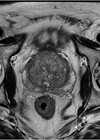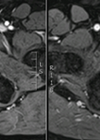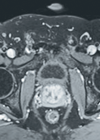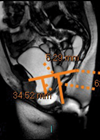Features archive for 2016
The assessment and medical treatment of LUTS secondary to BPH
The term benign prostatic hyperplasia (BPH) describes prostate enlargement due to non-cancerous processes. Several aetiological mechanisms are involved, including hormonal and vascular alterations; abnormal regulation of apoptosis; and prostatic inflammation, which may stimulate cellular proliferation. With ageing, prostate enlargement can...
Focal therapy for prostate cancer – ready for prime time?
The current therapeutic ratio for radical therapy in many men with localised prostate cancer is not ideal. For a significant side-effect profile, there seems to be a small survival benefit over a 10-15 year period. A strategy that might balance...
An update on antibiotic prophylaxis in TRUS-guided prostate biopsy
Since its inception in the 1980s, transrectal ultrasound (TRUS)-guided prostate biopsy has remained the standard tool for the histological diagnosis of prostate cancer. There are several advantages to this technique which have led to the widespread use of TRUS in...
ICS updates in continence care: the role of the nurse continence specialist in continence services
The nurse who specialises in continence care is recognised as a key member of interdisciplinary teams seeking to deliver high quality integrated continence services. The recently published international service specifications for continence care [1] supports the use of specialist continence...
Indeterminate renal lesions – a pragmatic imaging approach
The incidence of renal cell carcinoma (RCC) in the UK has increased steadily over the last two decades, largely driven by the increasing use of abdominal imaging and the incidental detection of small renal lesions [1]. The majority of incidental...
The surgical trainer – are we still evolving?
“We need a system and we will surely have it – which will produce not only surgeons, but surgeons of the highest type” William Halsted MD William Halsted, a famous American surgeon, is widely credited with developing the first formal...
Prostate artery embolisation
Introduction Benign prostatic hyperplasia (BPH), a common condition associated with ageing, affects 50% of those between the ages of 50 and 60 years, and as many as 90% of those older than 80 years. BPH is characterised by unregulated, benign...
Pelvic floor imaging – a brief synopsis
Background Pelvic floor imaging is an important part of both gastrointestinal and functional urology / urogynaecological departments. Symptoms such as obstructive defecation, incontinence and sphincter complex disorders have a significant impact on patient lifestyle and physical / mental well-being [1,2]....
Comedy and continence – don’t make me laugh
I’m a pelvic physiotherapist and, in a fit of temper, I wrote a comedy show about pelvic floors after having yet another woman say to me: “I’ve been leaking since my baby was born.” “How old is your baby?” “He’s...
ICS updates on continence care: making sense of detrusor underactivity and the underactive bladder
Countless epidemiological studies have established the frequent occurrence of lower urinary tract symptoms (LUTS) and the significant burden these symptoms incur. For the most part of the past three decades, there has been an overwhelming focus on detrusor overactivity (DO)...
Bladder cancer: where are we with intravesical therapies?
In the United Kingdom, almost 10,500 new cases of bladder cancer were identified in 2013, with over 5000 deaths in 2012 [1]. Seventy percent of new cases will be non-muscle invasive bladder cancer (NMIBC) at diagnosis and therefore will be...
A time management guide for urologists
Good time management is thought to not only reduce stress, but to improve personal efficiency, service delivery, clinical effectiveness and patient care. It was Benjamin Franklin in the 18th Century who originally made the link between success and the proper...














